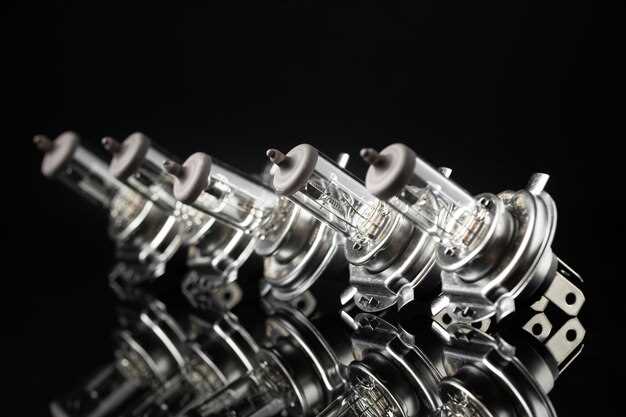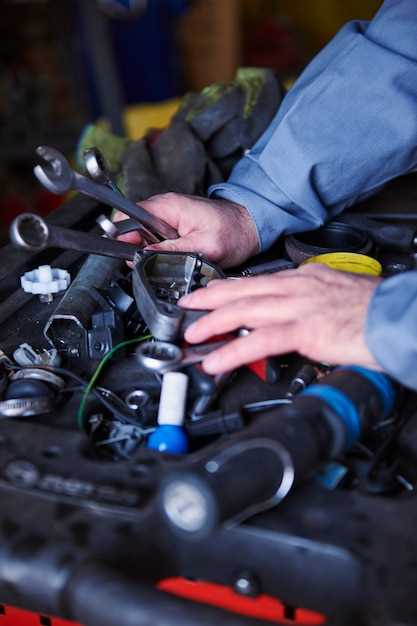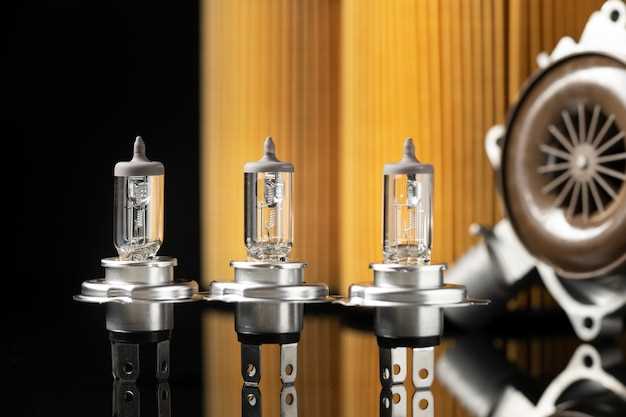
The performance and efficiency of an engine heavily depend on the quality of its components. Among these, spark plugs play a crucial role in the ignition process. They serve as the gateway for the electric current that ignites the air-fuel mixture in the combustion chamber, ultimately driving engine performance. Selecting the right spark plugs is vital for optimal engine function and longevity.
Different engines have varying requirements, making it essential to understand the specifications and characteristics of ignition components. Factors such as heat range, electrode material, and design differences can all influence how well a spark plug performs. Additionally, using the correct plugs can help prevent issues such as misfires, poor fuel economy, and increased emissions, ensuring a smoother driving experience.
In this article, we will explore the key considerations for choosing the right spark plugs for your engine. From understanding the functions of different types of plugs to knowing how to maintain them, this guide aims to equip you with the knowledge necessary to make informed decisions that will enhance your vehicle’s performance.
Understanding Spark Plug Types and Materials

When selecting spark plugs for your engine, understanding the different types and materials is crucial to ensuring optimal ignition performance. Spark plugs are categorized primarily by their design and the materials used in their construction, affecting their longevity and effectiveness.
One common type of spark plug is the standard copper core plug. These plugs feature a copper center electrode, offering good conductivity and heat dissipation. They are generally less expensive but have a shorter lifespan than other types, making them suitable for engines that require frequent replacement.
Platinum spark plugs are another option, utilizing a platinum center electrode. This material allows for a more extended lifespan due to its ability to withstand higher temperatures without wearing down. They provide a stable spark, making them ideal for today’s high-performance engines that demand reliable ignition over time.
For even greater durability, iridium spark plugs are available. Iridium is more robust than platinum and offers a smaller electrode tip, which results in a more focused spark. This enhanced ignition capability can lead to improved fuel efficiency and reduced emissions, making iridium plugs a preferred choice for modern vehicles.
Furthermore, spark plugs can be categorized by their design as well. Some plugs have multiple ground electrodes, which can improve ignition reliability in challenging conditions. Others feature a projected tip design, which extends the plug into the combustion chamber for better heat control and performance.
In summary, when choosing spark plugs, consider the engine’s requirements and usage conditions. The right combination of type and material will ensure reliable ignition, improved performance, and longevity of your engine’s components.
Identifying the Correct Heat Range for Your Engine
Choosing the right spark plugs is essential for optimal engine performance, and one of the critical factors to consider is the heat range of the spark plugs. The heat range refers to the ability of the plug to dissipate heat from the combustion chamber. Selecting the appropriate heat range ensures that the spark plugs operate efficiently and effectively under the specific conditions of your engine.
The heat range is typically indicated by a number or letter code provided by the manufacturer. A lower number generally means a hotter plug, which retains more heat, while a higher number indicates a cooler plug that dissipates heat more rapidly. Understanding your engine’s requirements is vital for the correct selection.
To determine the appropriate heat range, consider the following factors:
- Engine Type: High-performance engines often require cooler spark plugs to prevent pre-ignition and overheating, while standard engines can function well with a stock heat range.
- Driving Conditions: Variations in driving style, such as frequent stop-and-go traffic versus highway cruising, can affect the ideal heat range. Stop-and-go drivers may benefit from cooler plugs to prevent buildup, while highway drivers can use standard heat ranges.
- Fuel Type: The type of fuel can influence combustion temperatures. For instance, using higher-octane fuel may allow for a hotter spark plug, while lower grades may necessitate a cooler plug to prevent detonation.
Installing spark plugs with the incorrect heat range can lead to numerous problems. If the plugs are too hot, they may pre-ignite, causing engine knocking and potentially severe damage. Conversely, if they are too cold, fouling can occur due to incomplete combustion.
In conclusion, correctly identifying the heat range for your engine is essential for maintaining efficiency, performance, and longevity. Always consult your vehicle’s owner manual or a professional mechanic for specific recommendations tailored to your engine’s needs.
Installation Tips for Optimal Ignition Performance

Proper installation of spark plugs is essential for achieving optimal ignition performance in your engine. Begin by ensuring the engine is cool to avoid damaging the threads in the cylinder head. Always clean the area around the spark plug to prevent debris from entering the combustion chamber during installation.
Before installing new spark plugs, check the gap specifications recommended by the manufacturer. Use a gap gauge to adjust the gap if necessary, as this can significantly affect ignition efficiency and engine performance. An improperly gapped plug can lead to misfires, poor fuel economy, and increased emissions.
When inserting spark plugs, apply a small amount of anti-seize compound to the threads. This will allow for easier removal during future replacements, especially in aluminum cylinder heads where threads can become damaged more easily. Be cautious not to over-apply as this can lead to contamination of the combustion chamber.
Hand-tighten the spark plugs initially to prevent cross-threading. Once seated, use a torque wrench to tighten each plug to the manufacturer’s specified torque setting. This ensures a secure fit without risking damage to the threads or the spark plug itself.
After installation, reconnect the ignition wires or coils carefully. Make sure they are secure to maintain proper electrical contact. Finally, start the engine and let it idle to ensure that the spark plugs are functioning correctly and that the ignition is performing at its best.
